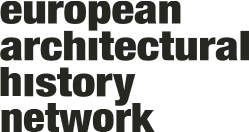The OASE 123 issue edited by Sebastiaan Loosen, Hans Teerds and Tom Avermaete will examine incompleteness in architecture. For this issue, editors are looking for contributions that in various ways explore historical examples and/or contemporary practices, wherein incompleteness is intentionally used as a design tool, cultivated and made productive. More specifically, three types of contributions that explore how incompletion – in these and other dimensions – is intentionally used as a design tool to create qualitative architecture are welcome:
1. Historical or theoretical essays (approximately 2,500 to 3,000 words) that describe, from a clearly defined perspective, how architects engage with incompletion or how notions of incompletion challenge stablished ideas of architecture and authorship. Proposals must be submitted as abstracts of 300 to 500 words.
2. Project descriptions (approximately 800 to 1,000 words) that analyse notable historical or contemporary projects, exploring how some form of incompletion is intentionally used as a design quality, or how questions about incompletion arise – directly or indirectly – in contemporary architectural practice. Proposals must be submitted as abstracts of 200 to 300 words and include at least one image.
3. Visual essays (4 to 6 pages) attempting to outline the relationship to incompletion through photographs or drawings, either documenting historical examples or presenting contemporary conceptualisations. Proposals must include sample images and brief descriptions of up to 300 words.
Everyone, including students and lecturers, is welcome to contribute to this Call for Abstracts.
Proposals must be submitted no later than 7 March 2025 23:59 via info@oasejournal.nl. Proposals can be submitted in Dutch or English.
For more information, please read the call here.
